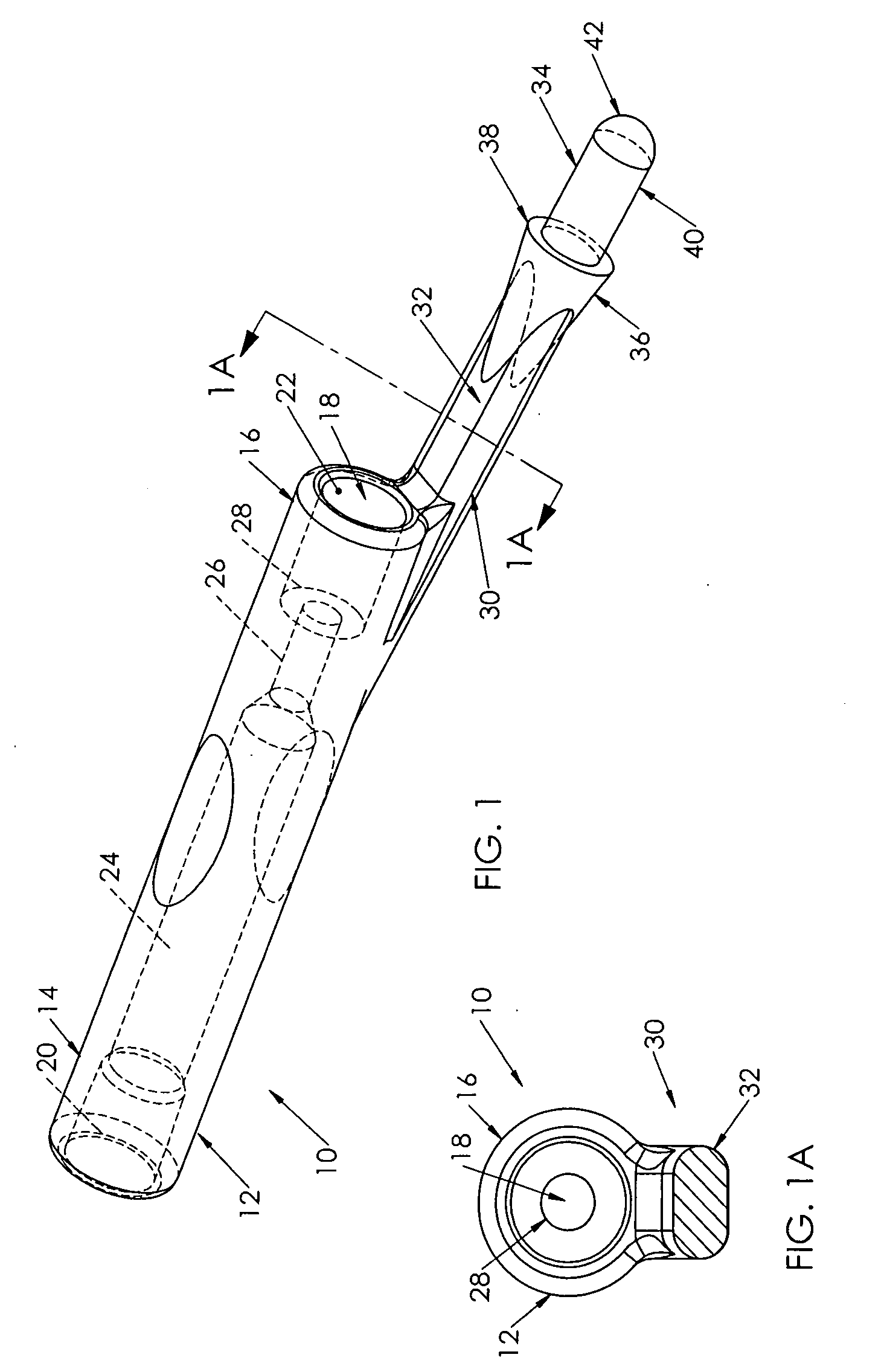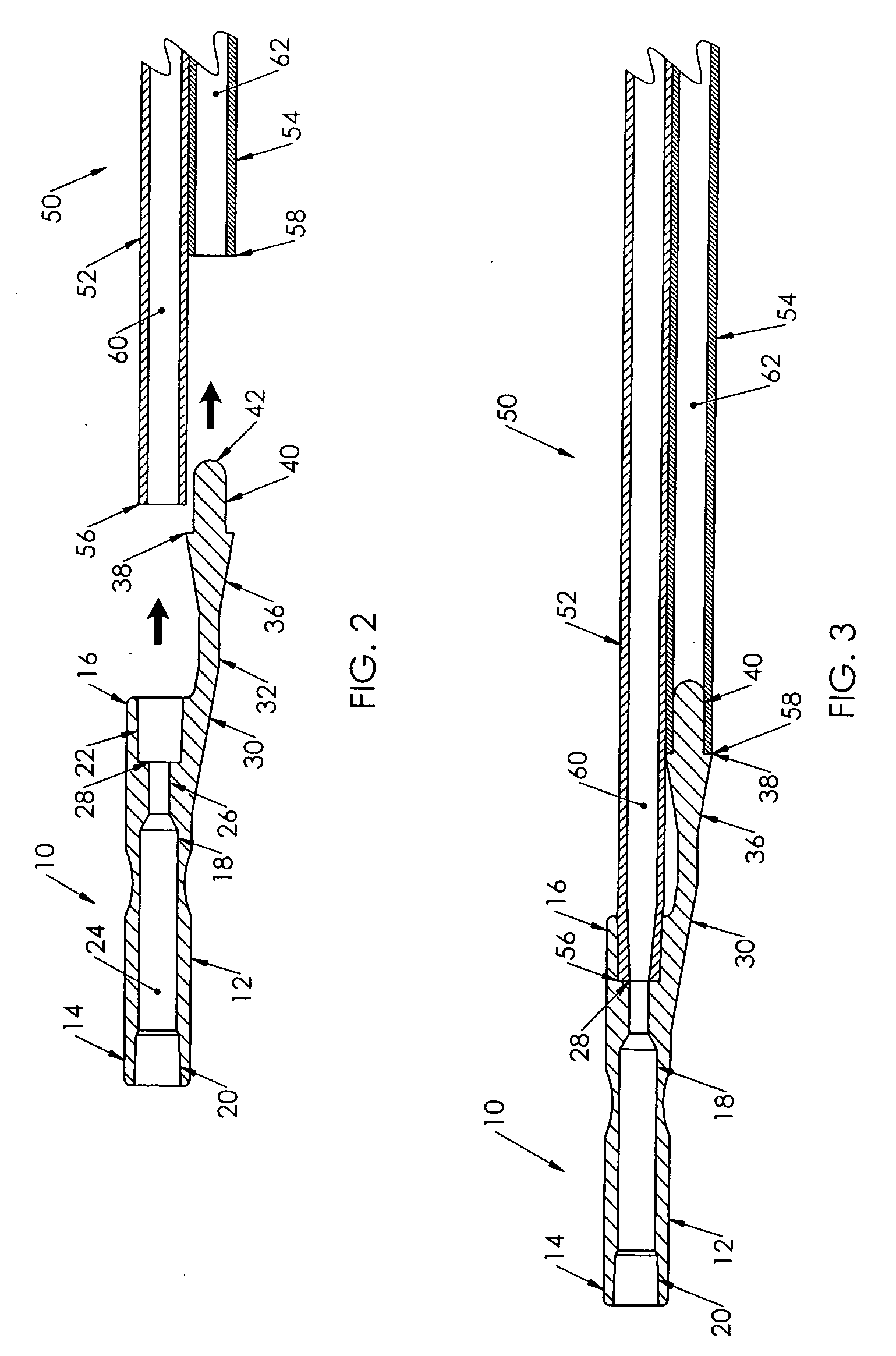Catheter tunneler adapter and methods of assembly to a catheter and use
- Summary
- Abstract
- Description
- Claims
- Application Information
AI Technical Summary
Benefits of technology
Problems solved by technology
Method used
Image
Examples
first embodiment
[0027]adapter 10 of the present invention is shown in FIGS. 1 to 7. Adapter 10 is shown in FIG. 1 to include body 12 having a proximal end 14, a distal end 16, a through passageway 18 extending through the body 12 from an entrance 20 at the proximal end 14 to an exit 22 at the distal end 16. The through passageway 18 also includes an intermediate, smaller diameter portion 24 and a transition portion 26 extending to the exit 22 and defining a distally facing ledge 28.
[0028]Adapter 10 also includes a flexible arm 30 having an elongated section, strut or tether 32 extending to a free end 34 having a frustoconical enlargement 36 defining a distally facing ledge 38 distally from which extends a somewhat elongated plug 40 having a rounded, blunt tip 42. Preferably, the strut or tether 32 has a flattened cross-section (see FIG. 1A) facilitating deflection of the flexible arm toward the longitudinal axis defined by the through passageway 18, as will be described hereinbelow relating to subc...
third embodiment
[0037]adapter 300 is depicted in FIG. 9. Adapter 300 is modified at its distal end to accommodate a catheter 350 whose first and second lumens 360,362 have a D-shaped cross-section. Adapter passageway 318 has an exit 322 that is D-shaped in cross-section. Also, plug 340 on flexible arm 330 also has a D-shaped cross-section to be received sealingly into the second lumen's proximal end, and a correspondingly shaped enlargement 336.
[0038]A flow chart is provided in FIG. 10 to set forth the method of using the adapter of the present invention, based on the embodiment of adapter 10 shown in FIGS. 1 to 3, and following a retrograde tunneling procedure. It is expected that the adapter of the present invention will be affixed to the proximal tubes 52,54 of the catheter 50 when received by the practitioner, and a stylet 70 is in position in the assembly releasably connected to the adapter 10. When received as an assembly by the practitioner, the assembly may either be inserted in the vascula...
PUM
 Login to View More
Login to View More Abstract
Description
Claims
Application Information
 Login to View More
Login to View More - R&D
- Intellectual Property
- Life Sciences
- Materials
- Tech Scout
- Unparalleled Data Quality
- Higher Quality Content
- 60% Fewer Hallucinations
Browse by: Latest US Patents, China's latest patents, Technical Efficacy Thesaurus, Application Domain, Technology Topic, Popular Technical Reports.
© 2025 PatSnap. All rights reserved.Legal|Privacy policy|Modern Slavery Act Transparency Statement|Sitemap|About US| Contact US: help@patsnap.com



